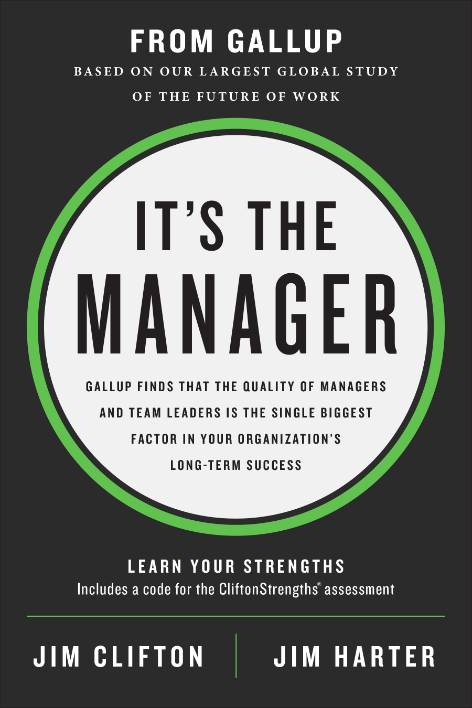Story Highlights
- Leaders are closely monitoring employee engagement and performance
- Remote working raises questions about productivity
- Many a CHRO voices concerns about employee burnout
COVID-19 has changed the way CHROs think about engagement and productivity. Not only have they retooled their strategies for a remote and hybrid workplace, but they have also increased monitoring of engagement and productivity in response to prolonged uncertainty and upheaval.
In late 2020, Gallup convened 15 virtual meetings with 150 chief human resources officers (CHROs) of large companies worldwide to better understand how the world's top HR leaders are maintaining high levels of engagement and productivity during this extended crisis -- and what they are watching for in 2021.
Here are five key themes Gallup discovered:
1. Mission and purpose have been important drivers of high employee engagement.
Many companies have reported increased employee engagement since the pandemic began, with some CHROs noting substantial gains. CHROs are quick to recognize that "nothing brings people together like a crisis." They have relied heavily on their organization's mission and purpose to inspire their teams over the past year. Leaders have also been intentional about recognizing front-line workers, publicly and privately, as well as those who have been taking on additional work due to the crisis.
2. Leaders have gone the extra mile to show they care about their people, with positive results.
Many CHROs have noted the extra resources that have been poured into health and safety measures. In some organizations, leaders have continued to visit operational facilities to check in with staff in person and show solidarity. Employees have provided feedback that these measures make them feel like their organization cares about them.
Some CHROs have emphasized their philosophy of leading change through empathy and compassion. Flexibility, support and a little "tolerance" in every policy help make everything run smoother. Nearly all of these companies have reported a primary focus on the wellbeing and mental health of their employees to help combat the immense stress and anxiety of pandemic-era life.
3. Unprecedented levels of communication and transparency have increased trust, morale and productivity.
Many CHROs connect engagement boosts to unparalleled increases in communication across all levels of the organization, as well as the unprecedented visibility of leadership and transparency of decision-making. Town halls are lauded by CHROs in serving all of these purposes, as well as functioning as listening posts to provide vital insights for maintaining employee engagement during the COVID-19 turbulence.
Increased two-way communication between leadership and managers has been especially critical. This communication has enabled managers to answer their employees' questions and provide crucial on-the-ground feedback for leaders to help craft their COVID-19 strategy.
4. Productivity measurement was probably broken before the pandemic -- and nobody is quite sure how to fix it.
For some roles, productivity is easy to measure -- in sales dollars, claims processed, customers served, etc. But for other roles, it's difficult to gauge. This is especially true for office work that has largely gone remote. CHROs are realizing how much their managers relied on the "butts in seats" metric to index productivity, an approach that was already admittedly outdated. They are now trying to find new solutions to solve the productivity equation for those roles.
Flexibility, support and a little "tolerance" in every policy help make everything run smoother.
One of the more controversial solutions involves the use of software tracking, including hours logged on, mouse clicks, email volume for emails read and sent, and so on. In addition to the widespread agreement that these metrics are a poor proxy for productivity (no better really than reporting total hours on the clock), many CHROs take a strong stance on the intrusive nature of these practices. In fact, some contend that these types of practices signal to employees a lack of trust and are a drain on engagement and culture.
So, perhaps the question was never about productivity, but rather about trust. Indeed, some admit that their people have the attitude, "If I can't see you, you're not doing much." It is a mindset that underlies some of the push to get people back into the office. However, replacing this attitude with a culture of trust is a tall order, and organizations are only beginning to have these conversations.
5. The emergency response mindset of 2020 is unlikely to be sustainable through 2021.
Some CHROs report high levels of productivity, especially those in essential services, healthcare, biotechnology/pharmaceuticals or other industries critical in helping the world cope with and combat COVID-19. They report that employees are going above and beyond to take on extra hours and work and overcome barriers imposed by the pandemic.
Boosts in productivity have also been noted in nonessential industries as workers put in the extra effort to contribute to their mission and purpose -- as well as, presumably, to help keep their companies afloat and their own jobs secure.
The real question for these CHROs is whether these heightened levels of productivity are sustainable. The most widespread concern of CHROs by far is wellbeing and mental health. Many forewarn that burnout is on the horizon. Some are already seeing the signs. For some, initial gains in engagement have leveled off or declined -- in fact, participation rates in these surveys have also suffered across the months for many. Other CHROs cite increasing turnover or uptake of unpaid leave options.
As CHROs reflect on the past 12 months, it is clear that employees have made heroic efforts in serving customers and keeping organizations in business. Many have put themselves at risk or persevered through immense personal challenges. Leaders, too, have been more intentional, caring and communicative, which has been a boon to their organizations' engagement and productivity. And yet the biggest challenges of the pandemic, such as mental health and burnout, may be just ahead.
Keep burnout low and productivity high:
- Tackle burnout at its source.
- Learn what managers can do to prevent burnout.
- Use our wellbeing framework to build a strategy that improves employee mental health.






